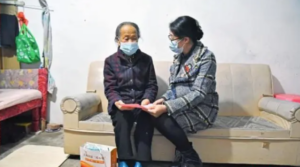
Guizhou Workers’ Hospital innovates to set up quasi-critical care wards to treat more patients with quality resources
Since December 2022, Guizhou Provincial Staff Hospital has established a four-level treatment system for the new crown epidemic, classifying patients into four levels: outpatient ambulatory, mild, quasi-serious, and serious according to their conditions.

Discussions were held on the cases.
It is understood that the hospital began to integrate clinical departments in mid-December 2022 in response to the new coronary epidemic, and on December 28, the 12th floor of the inpatient department was built into a 120-bed quasi-intensive care unit (temporary), mainly for patients with underlying diseases, older patients with new coronary virus infection, and patients who are difficult to handle in general wards but do not require tracheotomy or tracheal intubation. Through comprehensive treatment to avoid their further development of serious illness, but also to admit patients transferred out of the ICU.
The hospital’s president, Thistle, told reporters that the most important thing is to match quality medical resources to the patients who need them most, so as to implement the work requirements of “health preservation and prevention of serious illness”. The new unit adds another barrier between non-critical and critical patients, reducing ICU demand while allowing more patients to receive treatment second only to ICU. The unit also treats patients who have improved after ICU treatment, but not to the point of being transferred to a general ward, thus allowing for a faster turnaround of ICU beds and facilitating the treatment of more critically ill patients.
In order to form a quasi-intensive care unit, this medium-sized hospital, despite its limited medical and nursing strength, has deployed 26 key personnel with a big-picture view, who can bear hardships and have strong business skills to fill this unit. Peng Jin, director of the hospital’s ICU, said, “From the beginning unfamiliar, the workflow has been gradually improved, and a four-level ascending or descending step referral channel of outpatient-general ward-quasi-intensive ward-ICU has been opened up to allow, according to the changing condition, the patients receive timely and effective treatment.” It is understood that in order to safeguard this important combat force, the provincial staff hospital has also formed a reserve team to follow the class and learn.

Every morning, the quasi-critical care ward organizes a discussion of cases after a group room visit.
“Since its formation on Dec. 28, the paracritical care ward has admitted a number of paracritical patients and cured and discharged 58, enabling the ICU to speed up its turnover and allowing quality resources to treat more patients.” Thistle introduced.


Average Rating